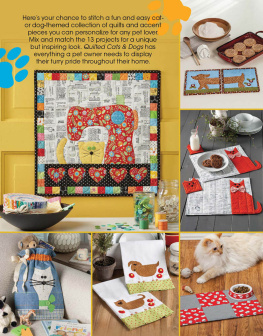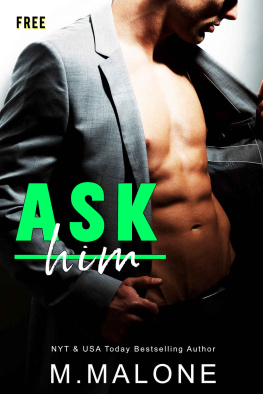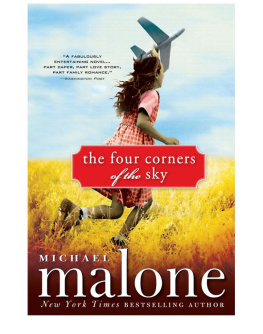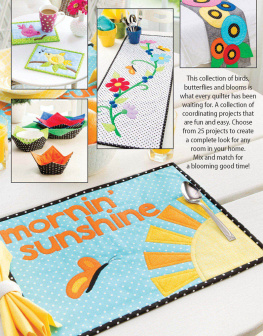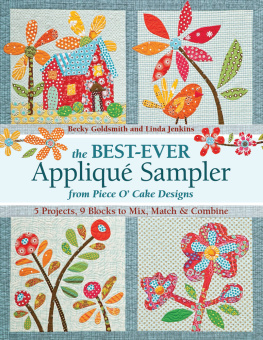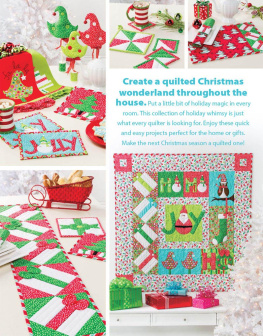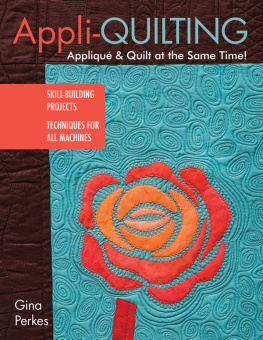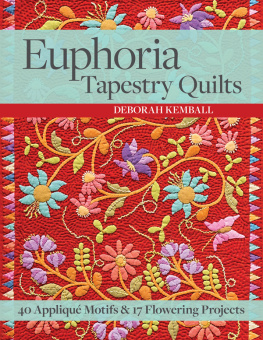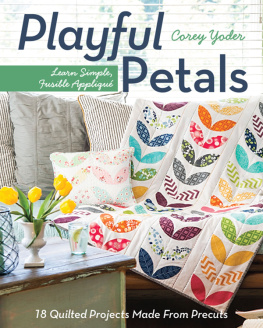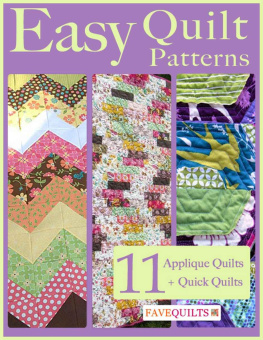If you are an Annies customer and have a question about the instructions on a pattern you have purchased, please visit:
AnniesCatalog.com/pages/customer_care/pattern_services.html
Templates
To download templates for easy printing, view the download instructions at the end of this book or click the Templates chapter in the Table of Contents.
I know many of us, our friends and our families have wonderful pets that we love dearly. Dogs and cats have a way of occupying not only our homes, but our hearts too. So why not celebrate them with a few quilted projects that we can use in our homes and for gifts? In this book you will find quilts, kitchen decor, wall hangings, pillows and even a pet bed, because dogs and cats need gifts too!
Chris Malone has been sewing and crafting most of her life. As an accomplished sewist, quilter and designer, she has had hundreds of designs published in sewing and quilting publications and has authored several books of her own.
She is a regular contributor to Quilters World magazine and Annies quilting and sewing book titles. Chris whimsical style has been a favorite of many quilters and sewists and is easily recognizable at a glance.
Chris resides in the diverse and beautiful Willamette Valley of Oregon.
Table of Contents
General Information
Table of Contents
Guide
Pages
You probably already have most of the supplies needed for these projects. Even so, here are a few tips on materials and tools, general assembly instructions and finishing tips that you may find helpful.
Basic Tools & Supplies
Scissors for paper and fabric
Rotary cutter and mat
Nonslip quilting rulers
Nonpermanent fabric-marking tools
Template material
Sewing machine
Walking or even-feed foot (optional)
Hand-sewing needles
Straight pins and pincushion
Curved safety pins for basting
Seam ripper
Steam/dry iron and ironing surface
Fabric & Thread
For best results, use only good-quality 100 percent cotton fabric and quality thread. Your time is worth it. If you are prewashing, do so with ALL of the fabrics being used. Generally, prewashing is not required in quilting.
Heres a Tip
Template material does not have to be expensive. I use cereal boxesthey are clean and easy to cut, and are still sturdy enough to last through repeated tracings.
Fusible Web With Paper Release
There are a lot of appliqud projects in this book, and all have been made using fusible web with paper release and machine blanket-stitched edges. Always follow the manufacturers directions for fusing times as brands do vary. Of course, if you prefer to hand-appliqu or use other methods of machine appliqu, feel free to do so.
Batting
Almost any low or mid loft batting will work for these projects. For items that will be subjected to heat, such as hot pads and coasters, using one or two layers of cotton batting along with needle-punched insulated batting is suggested.
A needle-punched insulated batting reflects heat and cold back to the source. This breathable material has deep fibers that prevent conduction and a reflective metallized film that prevents radiant energy from passing through. Do not add this batting in anything you will be using in the microwave.
Fabric Glue
Fabric glue is listed on some of the project materials lists. Usually it is described as an optional item, as you can choose to tack the pieces in place by hand. But sometimes, it is easier and more practical to use glue. When using a fabric glue, apply it carefully and sparingly and follow the manufacturers directions.
Walking or Even-Feed Foot
A walking or even-feed-foot attachment for your sewing machine is a very helpful tool when sewing layers, and it is useful for simple quilting patterns as well. This foot feeds the upper and lower layers of fabric through the machine at the same rate.
Pinking Shears
Since a lot of the projects have curved pieces that are sewn and turned, consider adding a pair of pinking shears to your toolbox if you dont already have them. If you cut around curved seams with the pinking shears, you eliminate the need to clip the curves with straight-edge scissors, saving some time and effort. Pinking shears can also be used to control fraying on seam edges.
General Assembly Instructions
Read all instructions carefully before beginning each project.
All seams are " unless otherwise directed.
The measurements given for each project include the outer seam allowance.
Press each seam as you sew.
Appliqu
Many of the projects in this book are made using a fusible web with paper release and a machine blanket stitch. Refer to Raw-Edge Fusible Appliqu for specifics. Other appliqu methods may be substituted if desired. All of the appliqu patterns are reversed so they will face the correct direction when fused to the background. When appliqus overlap, slip one edge under the other " before fusing.
Sometimes, appliqu fabric is so light-colored or thin that the background fabric shows through excessively. You can correct this transparency problem by fusing a piece of lightweight interfacing to the wrong side of the fabric and then applying the fusible web with the marked pattern to the interfacing side. Cut out and use in the same way.
When arranging appliqu pieces on the background, use a straight pin to drag the pieces in place.
If the appliqu is large and you want to reduce the stiffness, cut out the center of the fusible-web shape after drawing the pattern onto the paper side of the web. Just leave a margin of "" inside the pattern line. This gives a border of adhesive to fuse to the background and leaves the center soft and easy to quilt.
If your fabric puckers during the machine stitching, use a light- to medium-weight stabilizer behind the appliqu.
If using the machine blanket stitch for an edge finisher, practice going around curves. You need to move the fabric as often as necessary to keep the stitch going into the appliqu as perpendicular to the edge as possible. When you get to corners, place a stitch at the point before pivoting to stitch the next side. 
Raw-Edge Fusible Appliqu
One of the easiest ways to appliqu is the raw-edge fusible-web method. Paper-backed fusible web individual pieces are fused to the wrong side of specified fabrics, cut out and then fused together in a motif or individually to a foundation fabric, where they are machine-stitched in place.
Choosing Appliqu Fabrics
Depending on the appliqu, you may want to consider using batiks. Batik is a much tighter weave and, because of the manufacturing process, does not fray. If you are thinking about using regular quilting cottons, be sure to stitch your raw-edge appliqus with blanket/buttonhole stitches instead of a straight stitch.
Cutting Appliqu Pieces
Fusible appliqu shapes should be reversed for this technique.
Trace the appliqu shapes onto the paper side of paper-backed fusible web. Leave at least " between shapes. Cut out shapes leaving a margin around traced lines.

